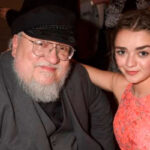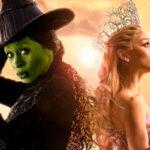

“The Silence of the Lambs” is an absolute classic of cinema that, since its release in 1991, continues to fascinate and terrify audiences around the world. Based on Thomas Harris’s novel, the film not only won the Academy Award for Best Picture but also solidified its place in the history of psychological thrillers with its intricate plot and unforgettable characters. The story revolves around the young FBI agent Clarice Starling, brilliantly portrayed by Jodie Foster, and her complex relationship with the cunning and disturbing Dr. Hannibal Lecter, played by Anthony Hopkins.
The film delves deeply into the minds of its protagonists, exploring themes of psychological manipulation, the search for truth, and what it means to be a predator. In this text, we will explore some fascinating trivia about the production and behind-the-scenes of this iconic thriller that continues to influence the genre to this day.”
1 – INSPIRED BY A REAL SERIAL KILLER
Much of the plot of “The Silence of the Lambs” was inspired by the real-life relationship between criminology professor Robert Keppel from the University of Washington and the notorious serial killer Ted Bundy. Similar to the dynamic between Hannibal Lecter and Clarice Starling, Bundy collaborated with Keppel in the investigation of the series of murders known as the “Green River Murders” in Washington.
Bundy was executed on January 24, 1989, but the Green River cases were only solved in 2001 when Gary Ridgway was captured. On November 5, 2003, Ridgway admitted his guilt in a Seattle court, confessing to 48 counts of first-degree murder.
2 – SEAN CONNERY ALMOST PLAYED THE LEAD ROLE
Unfortunately, we will never know how it would have turned out. Connery read the script and found it “repugnant.” Daniel Day-Lewis and Derek Jacobi were also considered for the role, which was ultimately brilliantly portrayed by Anthony Hopkins.
3 – THOUGHT IT WOULD BE A CHILDREN’S FILM
When Anthony Hopkins’s agent contacted him in London to inform him that he was being sent a script titled The Silence of the Lambs, Hopkins immediately assumed he was being considered for a children’s film.
4 – A GOOD MAN?
When Anthony Hopkins learned he had been chosen to play Hannibal Lecter due to his performance as Dr. Frederick Treves in The Elephant Man (1980), he questioned Jonathan Demme, saying, “But Dr. Treves was a good man.” Demme replied, “Well, Lecter is a good man too. He’s just trapped in a disturbed mind.”
5 – BUILDING THE CHARACTER
Anthony Hopkins did not base his portrayal of Hannibal Lecter on a single person but combined elements from Truman Capote, Katharine Hepburn, and the computer HAL from 2001: A Space Odyssey. This combination created a complex depiction of evil that Thomas Harris explored during his research.
John Douglas, an FBI profiler and pioneer in criminal and murderer analysis, commented, “Fortunately, there is no one like him.” Douglas, who led one of the FBI’s investigative units and inspired the character Jack Crawford (played by Scott Glenn), arranged for Glenn to visit the FBI’s Behavioral Science Unit in Quantico, Virginia.
After listening to recordings of Lawrence Bittaker and Roy Norris—who raped and abused a 16-year-old girl—Glenn, in tears, declared he had changed his stance to “pro-death penalty.” He also watched footage of the torture and murder of women and decided not to reprise his role in the sequel, stating that the images still haunt him today.
6 – ANTHONY HOPKINS RESEARCHED SERIAL KILLERS
After Lecter’s transfer from Baltimore, the initial plan was to dress him in a yellow or orange jumpsuit. Anthony Hopkins convinced Jonathan Demme and costume designer Colleen Atwood that an all-white outfit would make the character appear more clinical and, therefore, more disturbing. Hopkins revealed that this choice was inspired by his own fear of dentists.
To prepare for the role, Anthony Hopkins researched serial killer files, visited prisons, and attended court hearings on serial crimes. Additionally, he drew inspiration from a friend in London who never blinked, which made those around him uncomfortable.
7 – ACCENT
Jodie Foster reveals that during the first scene between Lecter and Starling, Anthony Hopkins did an impression of her Southern accent and improvised unexpectedly. Foster’s frightened reaction was authentic; she felt personally offended. Later, she expressed her gratitude to Hopkins for provoking such a genuine response.
Jonathan Demme had also criticized Foster’s accent in The Accused, despite her winning an Oscar for the performance. However, after working with her again, Demme seems to have reconsidered his opinion.
8 – THE INSPIRATION FOR BUFFALO BILL
Ed Gein, known for skinning his victims; Ted Bundy, who used his charm to lure women into his van and collaborated with the FBI on investigations after his arrest; and Gary Heidnick, who kept kidnapped women in a pit in his basement, are some of the cases that inspired Thomas Harris. The author of the original books attended some of Bundy’s trials and sent him a copy of “Red Dragon”.
9 – THE BUTTERFLY “WINGS” ON THE MOVIE POSTER
The pattern on the back of the butterfly on the movie posters is not the natural pattern of the Tobacco Horn Worm species. The design is actually Salvador Dalí’s “In Voluptas Mors,” an image of seven nude women arranged to resemble a human skull. The poster was inspired by a sketch by Dalí and photographed by Philippe Halsman.
But that doesn’t mean the Tobacco Hornworms used throughout the film didn’t receive star treatment. They flew first class to the set in a special carrier, had special accommodations (rooms with controlled humidity and heat), and were dressed in carefully designed outfits (body shields with painted skulls and crossbones).
10 – “WHAT THE HELL WAS THAT?”
When Clarice visits Dr. Hannibal Lecter in his new clinic, Lecter insists that she continue discussing her childhood as part of the agreement. Reluctantly, Jodie Foster proceeds with her narrative about the escape. In the middle of her confessions, she mentions having a lamb with her. If you listen carefully, after she says, “I thought if I could save just one…,” you can hear a distant sound of something falling to the floor.
A crew member had dropped a key during filming. Director Jonathan Demme was alarmed, fearing it would compromise the scene. However, Foster stayed in character and continued with her story, leading Demme to decide to keep filming. When “Cut” was called, Foster turned to the crew and exclaimed, “What the hell was that!”
11 – ONLY 16 MINUTES?
Although he won an Oscar for his performance in The Silence of the Lambs, Anthony Hopkins appears on screen for only 16 minutes.
12 – OSCAR “BIG FIVE”
The term “Big Five” refers to the top Oscars awarded to a film that wins Best Picture, Best Director, Best Actor, Best Actress, and Best Screenplay (whether adapted or original).
The first film to achieve this feat was It Happened One Night in 1935, with Clark Gable and Claudette Colbert winning Best Actor and Best Actress, respectively.
The next film to accomplish this was One Flew Over the Cuckoo’s Nest in 1976, with Jack Nicholson and Louise Fletcher winning Best Actor and Best Actress. In 1991, Anthony Hopkins and Jodie Foster also won the Oscars, completing the list of Big Five winners.
“The Silence of the Lambs” remains a towering achievement in cinematic history, blending psychological intrigue with chilling performances. The film’s success is rooted in its innovative approach to the thriller genre, featuring complex characters and an unsettling atmosphere.
The film’s iconic imagery, from the butterfly on the poster to the chilling dialogue, continues to captivate audiences and influence the genre. Its legacy is cemented by its remarkable ability to provoke thought and evoke emotion, making it a timeless classic in the world of psychological thrillers.








